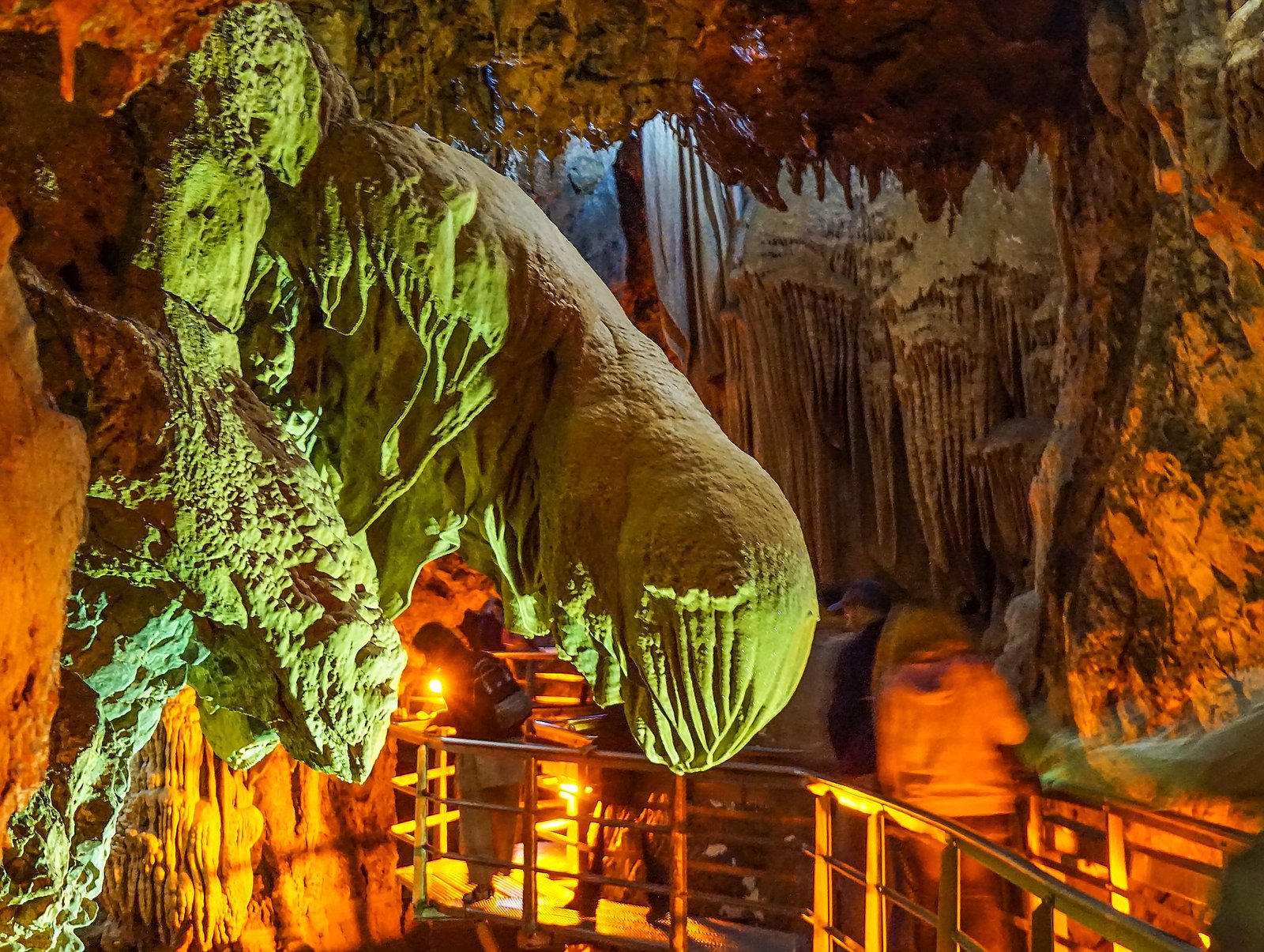Petralona Cave lies near the village of Petralona in Halkidiki, northern Greece. Located just 35 kilometers southeast of Thessaloniki, the cave stretches across the western slopes of Mount Katsika at an elevation of 300 meters. In 1959, a local shepherd named Filippos Chatzaridis discovered the entrance while searching for water. Soon after, archaeologists began exploring the site, which quickly gained international attention.
The cave holds immense scientific importance. Excavators uncovered the famous “Petralona Skull,” a fossilized human cranium estimated to be around 700,000 years old. This skull represents one of the earliest known human ancestors in Europe. As a result, Petralona Cave became a key location for studying early human evolution.
Beyond its anthropological significance, the cave features spectacular natural formations. Visitors walk through over two kilometers of tunnels filled with dramatic stalactites and stalagmites. In addition, scientists discovered fossils of now-extinct animals, including cave bears, hyenas, and giant deer. These findings help researchers understand the fauna that once roamed the region during the Pleistocene era.
Adjacent to the cave, the newly renovated Petralona Cave Museum offers further insight. Since its reopening in 2024, the museum has featured modern, interactive exhibits. Visitors can view detailed replicas of the Petralona Skull, along with ancient stone tools and bones. Moreover, multimedia displays guide guests through the cave’s prehistoric timeline and highlight the discoveries made during decades of excavation.
Travelers can easily reach Petralona Cave by car from Thessaloniki or Nea Moudania. Clear road signs direct drivers to the entrance. Once there, guests can park on-site and walk a short distance to both the cave and museum.
The site welcomes visitors year-round. From April through October, opening hours run from 8:00 a.m. to 8:00 p.m. During the winter months, the site closes earlier at 3:00 p.m. and remains closed on Tuesdays.
In conclusion, Petralona Cave combines natural beauty with archaeological importance. The rich fossil record, impressive rock formations, and detailed museum exhibits make it a must-visit destination for anyone interested in prehistory, evolution, or geology.



Comment (0)